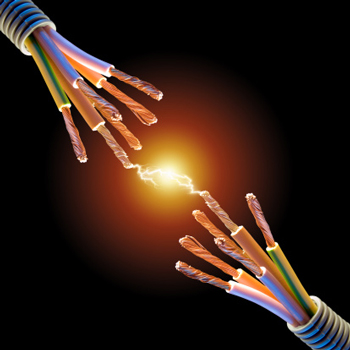What are Arc Flash Hazards I am hearing about?

All Piper Electric employees must wear arc flash protectors or arc flash personal protective equipment, also known as PPE, when working with devices, machinery or circuitry that have live electrical connections, in accordance with the OSHA Standard. The level of PPE depends on the level or risk. All employees receive training in the use of PPE, which includes what conditions or locations make the equipment necessary, how to properly wear PPE and knowledge of arc flash protector maintenance. At Piper Electric our number one priority is to get our employees home safe every night.
The type of protective outer wear worn depends on the level of flash risk. While working in the lowest risk levels, personnel must wear flame-retardant clothing. The level of protection gradually increases to include rubber gloves and other specialized clothing. As the level of risk increases employees must don a specified number of layered, flame-retardant clothing under a multi-layered flash suit complete with hood and gloves.
*OSHA 29 Code of Federal Regulations (CFR) Part 1910, Subpart S
Arc Flash Hazards
The term arc flash refers to a type of electrical explosion that occurs when electricity arcs between two conductors. The dangerous blast has an extremely destructive force similar to dynamite and produces heat that often exceeds3 5,000 degrees Fahrenheit. The flash also produces a blinding light, molten metaland deafening, pressurized sound waves. Individuals within close proximity of an arc flash may suffer severe burns, be physically thrown and injured or could lose their life. The blasts occur for a variety of reasons that include damaged or dirty equipment, faulty wiring or personnel coming in close proximity to live wires. Before working on equipment hardwired to electrical sources, personnel must be equipped with appropriate protection.
The National Fire Protection Association (NFPA) 70E-2000, Standard for Electrical Safety Requirements for Employee Workplaces can be considered a “how to” standard behind OSHA enforcement for arc flash protection. Each Employee at Piper Electric is trained in NFPA 70e. This ensures PECI is taking the appropriate action to be in federal , state and local compliance. Specifically Piper Electric has a safety program with defined boundaries and responsibilities, even employing a full-time Safety Manager. Each employee is trained on safety issues for each job, has the appropriate tools, and the correct PPE ensuring accidents are avoided.
Arc Flash Analysis
The Denver electricians at Piper Electric regularly perform arc flash studies in accordance with OSHA regulations to determine the degree of danger involved in industrial settings. The analyses are performed as a means of understanding and preventing possible arc flash hazards. In keeping with National Electrical Codes and OSHA requirements, an electrical engineer surveys the breaker panels, fuse panels, panel boards and switch panels along with motor control centers and panels in the facility. Following the evaluation and calculations, each location receives an ANSI arc flash warning label. This marking can be generic or very specific, whichever is more relevant. Future revisions of the NEC standard may require more detailed information on this label. At minimum the label should contain enough information to determine the area where conditions exist that only qualified workers should enter.
Necessity of Arc Flash Studies
The NFPA requires that facilities undergo the studies before personnel may approach exposed electrical conductors or circuits that have not been rendered safe. The analysis provides calculated data concerning arc flash hazards of the equipment and electrical components throughout the building. The labels denote color-coded warnings that describe the inherent risk involved and the clothing requirements or arc flash protectors that must be worn by personnel in these locations. The team of at Piper Electric is available if one has questions concerning arc flash studies or appropriate PPE.
